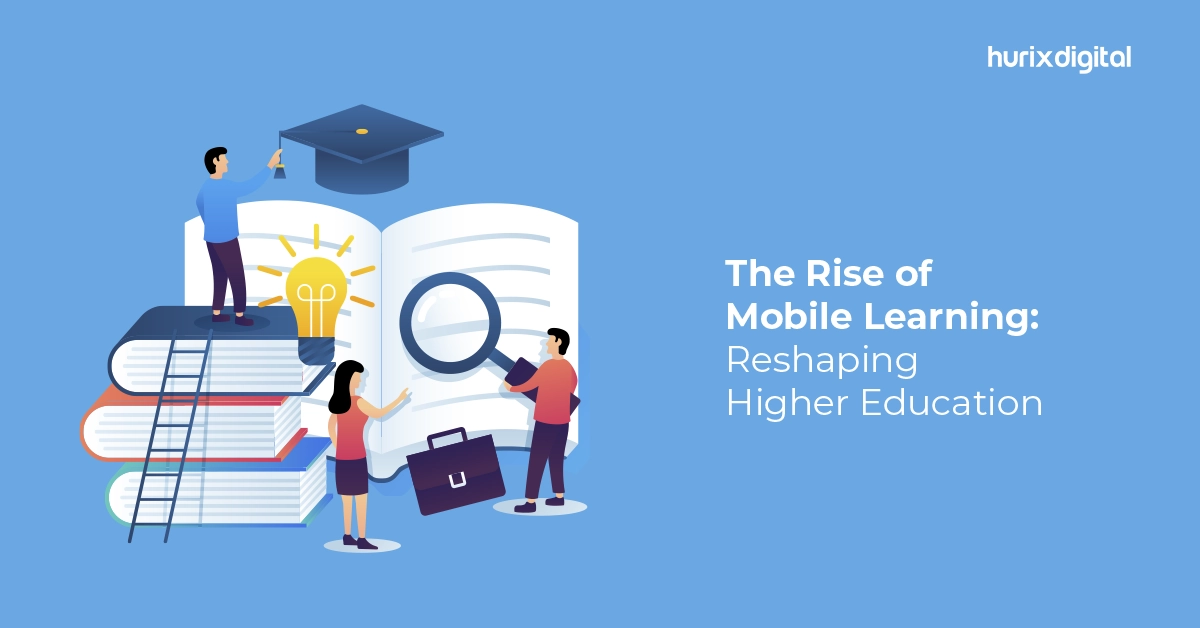
6 Ways to Use Mobile Learning to Enhance Employee Productivity
Summarize with:
The digital age has transformed how we communicate, operate, conduct business, and even learn today. Technology has brought a new meaning to all spheres of life, while, at the same time, reducing costs and increasing efficiency. Internet and global learning platforms provide huge support to people of all ages across the globe; right from offering basic brain development games for a toddler to delivering training modules for working professionals. In fact, it’s even supporting the elderly by helping them learn new life skills.
This revolution has now reached another great phase with the “mobile-first” era. In this smartphone era, all you need is a good internet connection, and you have a reservoir of knowledge at your fingertips.
What is Mobile Learning?
Mobile learning is the use of portable electronic devices such as smartphones, tablets etc., for teaching and learning beyond the confines of physical classrooms. With the help of mobile learning or elearning, instructors can create training materials beforehand and the employees can take the course from any location at a convenient time.
6 Ways Mobile Learning Can Improve Employee Productivity
Have you ever tried conducting training sessions for an entire team? The task comes with a set of complicated obstacles such as different shift timings, team downtime and even varying proficiency levels. M-learning can combat all such hurdles while reducing the costs associated with training.
Here’s how mobile learning benefits workplace productivity:
1. Flexibility Helps Maintain a Balance between Work and Training
With mobile learning, employees can learn on any device, at any time. This flexibility makes it easier for them to learn at their own pace. In case of physical training sessions, a trainer has to be engaged, venue availability has to be considered and many other factors must be taken into account. The convenience of flexible scheduling of training sessions with m-learning helps overcome these aspects and the employees can utilize their productive hours more effectively.
2. More Retention with New Avenues for Growth
Hiring and training new employees’ costs more than re-training the existing ones. The latter are already familiar with the organization’s processes and team requirements. M-learning provides a simple solution to retaining trained employees by offering them new and improved skill sets. If the employees find opportunities to grow within the organization, it benefits the employee as well as the organization, thus creating a win-win situation.
3. Staying Updated with the Advancement in Technology
Each day a new tool and technology is entering the market. Mobile learning provides a great platform for employees to learn, imbibe and stay updated with these new tools. Organizations can easily implement new tools and technologies by providing training modules through m-learning solutions. When employees see the organization being so heavily invested in their growth, they are more dedicated, loyal, and efficient.
4. Increased Engagement at Work with New Skills
Equipped with new skill sets, employees find new purpose to their existing roles. This involvement generates a new fervor amongst the workforce and keeps them engaged. Employees are excited to prove themselves and put their new skills to test.

5. Easier to Succeed and Apply for New Roles
To keep the engagement level intact, the employees should be rewarded with accreditation and promotions. When organizations create new opportunities for employees to work towards a goal, it keeps the workforce motivated and leads to overall growth in the organization.
6. Extensive Metrics System for Better Management
Metrics provide an insight into how different kinds of training impact a team’s performance. Unlike physical training sessions, mlearning provides accurate and comprehensive metrics regarding team statistics. Based on these figures, the management can make crucial business decisions and implement further training.
How to Create Engaging Content for Mobile-based Training?
Even though m-learning is a promising avenue for learning, it requires thoughtful execution. There are certain techniques to make m-learning engaging and appealing.
Here are some tips that can be applied to increase the impact of m-learning for your workforce –
App Integration
Today, everything is done through elearning apps – you can easily find something that meets your needs on your smartphones or tablet. The modern workforce easily connects with an app UI, so you can pack a lot of features in a lite app. It creates a platform for the user to quickly interact and learn from the app so that the momentum created by m-learning is maintained. Here are 10 Reasons Why You Should Adopt Mobile Learning Apps.
Bite-sized Learning
Widespread use of mobiles has also resulted in a shorter attention span. With great internet speed, people are often browsing through web pages and content within seconds. To cut through the overload of information available, microlearning sessions in the form of quick tips or tutorials has been gaining popularity.
You can even create personalized FAQs based on the user’s proficiency in a subject and their experience level for quicker resolution of queries.
Related: Supercharge Your Employee Training Program with Bite Sized Learning
Interactive Videos
Today, you can learn about a new technology or a tool with interactive videos. The audio-visual combination is far more engaging than detailed, monotonous text-based content. It helps viewers retain the information easily. With richer and more captivating videos, a lot more information can be packed in comparison to traditional methods such as presentations, journals, etc.

Gamification
Gamification is a great approach to impart learning in a fun and interactive way. High completion rates and higher learning achievements are a few of the outcomes of integrating gaming principles to m-learning programs. One of the key benefits offered by m-learning is remote and multi-screen access.
Learning in an isolated environment can become uninspiring and tedious. The competitive and score/reward system of game-based learning acts as a catalyst for remote employees and thus keeps them motivated to continue with the training until the end.
Social Learning
With the help of online discussions, forums, and even contests, m-learning can be made much more exciting. The presence of a community offers users a support system as well as a collaborative approach towards learning. It also brings people from various platforms with common learning goals together, providing a unique learning experience.
Responsive Design
M-learning is focused on the millennial generation and hence requires smooth navigation. The learning module should have a responsive design as it is supposed to work on various smartphones and tablets. The UI must, therefore, be designed to fit properly on screens of all sizes for a seamless reading experience.
Related: How Can You Use mLearning in Employee Training?
Conclusion:
M-learning is a powerful approach for employee training. It checks all the right boxes for benefits, from flexibility to engagement. A carefully plotted and executed mobile learning strategy in the workplace can improve employee engagement, while, at the same time, providing them with avenues to grow and increase their productivity. Not only does m-learning help the organization grow, but it also aids in increasing the return on investment, making it the perfect solution to all learning needs of the digital era.
 A Space for Thoughtful
A Space for Thoughtful 



